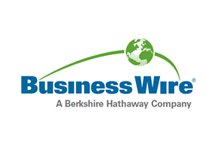Increased Competition, Delivery Speed, and Pace of Change in the Services Economy Are Forcing Services Organizations to Rethink Resource Management Strategies
IRVINE, Calif., Feb. 28, 2018 /PRNewswire/ -- The $3 trillion global professional services industry is in the midst of a major transformation. As the complexity of delivering services continues to accelerate--for example forcing a shift to faster project-based engagements, increased demands for hyper-specialization, an increasingly competitive market, and significant downward pressure on costs and margins--so do the complexities surrounding resource management.
Today Mavenlink, the leading provider of cloud-based software for the modern services organization and a G2 Crowd Leader, announced it is changing how services organizations view and manage resources by enabling a groundbreaking new operating model--Full-Cycle Resource Management.
Research Confirms Need for Improved Resource Management
Recent research underscores the desire for and value of effective resource management, in other words an organization's ability to get the resources with the right capabilities, on the right assignments, at the right time, for maximum project margins. Yet many organizations struggle implementing systems that enable the agility required. Many are finding that fragmented operating models and systems are creating chaos. This is resulting in time-consuming and error-prone decision-making processes, which in turn is driving down utilization of employees and financial performance.
-- The 2018 State of the Services Economy revealed that resource management
issues are consistently the biggest challenges for services
organizations today. The top resource management challenges in 2018
include: understanding the financial impact of resource changes during
project delivery, forecasting staffing needs based on incoming demand,
and managing resources across multiple projects.
-- The State of the Services Economy report also revealed that many
executives view their workforce structure as a roadblock to success: 65%
of executives stated that their organization had to turn down work in
the last 12 months because they did not have the necessary resources to
deliver that work, up from 35% in the 2017 report.
-- A recent survey by the Resource Management Institute found that 24% of
services companies operate without a documented resource management
process, and only 16% of companies consider themselves as having highly
matured RM processes.
"The transformation of the services industry has been very rapid, catching many organizations by surprise and flat footed," said Ray Grainger, a 30-year services thought-leader and currently the CEO and Founder of Mavenlink. "Leaders must take initiative and identify the near-term adjustments required to find success within the new Service Level Economy. Effective resource management, which is the single biggest contributing factor to costs and performance for a services business, is a logical starting point."
Full-Cycle Resource Management Advances Business Strategy
While there is industry-wide acknowledgement that resource management is one of the biggest struggles for services organizations, to date there has been little published on the topic.
Recently a new model, Full-Cycle Resource Management, has emerged to help organizations make informed resource-related decisions. A holistic process that mirrors every stage of the services engagement, Full-Cycle Resource Management enables organizations to be more agile while also boosting profit margins.
An effective Full-Cycle Resource Management approach is comprised of four phases:
1. Estimate. This phase occurs during the sales cycle, when new business
teams, account managers and project managers collaborate during the
proposal process to get an idea of the time, resources, and budget
needed.
2. Plan. Project managers, resource managers and department heads determine
how resources will be allocated for a project in a way that meets clients
expectations and maximizes profitability.
3. Deliver. This is when the project plan is set into motion. Project
delivery teams, project managers, and resource managers must communicate
and collaborate on changes that impact resource schedules.
4. Analyze and Optimize. This is not a final step -- it's a phase that is
constantly layered across the resource management process to enable smart
decisions. It requires constantly measuring results, then maximizing what
works and minimizing what doesn't.
"Today's services firms are attempting to operate in a new business environment with outdated practices," continued Grainger. "It is important to improve the process, in order to improve the business. The exciting thing is that what once seemed impossible is now automated with modern technology."
Mavenlink Unveils Full-Cycle Resource Management Solution
Today Mavenlink introduced significant enhancements to its Full-Cycle Resource Management solution to provide organizations with full visualization of current and forecasted resource needs, the tools necessary to swiftly manage change, and the data necessary to elevate the role of resource management from tactical to strategic. It is the industry's first holistic approach to resource management.
"At Mavenlink, we have invested heavily to solve this problem. With this launch, we offer the most robust resource management product on the market, enabling our customers to be world-class resource managers. The agility, efficiency, and reporting capabilities now available in Mavenlink's Full-Cycle Resource Management will give our clients a competitive advantage," concluded Grainger.
To help engage organizations with the common issues they may deal with, Mavenlink has created a Full-Cycle Resource Management Experience that illustrates the benefits of the new model. To learn more about Mavenlink and its capabilities, visit www.mavenlink.com.
About Mavenlink
Mavenlink delivers enterprise-class Software as a Service (SaaS) that transforms how businesses work with distributed teams, contractors and clients around the globe. Mavenlink's innovative technology suite enables organizations of any size to successfully manage and scale their people, projects, and profits. Consulting firms, IT services organizations, creative agencies, and professional services teams in more than 100 countries are running their businesses more effectively and predictably with Mavenlink. Mavenlink was recently named to the Red Herring 100, and a 2015 Cool Vendor by Gartner, the world's leading technology research and advisory firm. Learn more at www.mavenlink.com.
SOURCE Mavenlink





